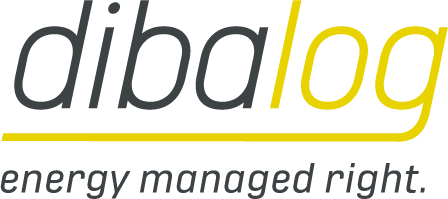Optimization of energy efficiency with a dynamic demand management controller
Control energy in real time, relieve the grid, reduce operating costs
Introduction to dynamic demand management
Modern control systems for maximum efficiency and flexibility
Dynamic demand management is a key technology for the efficient distribution and control of energy in real time. Companies can adapt their energy consumption to current demand situations and grid conditions, avoid peak loads and thus reduce costs in the long term.
In a time of rising energy prices and increasing regulatory requirements, this form of energy-efficient real-time control is becoming increasingly important - especially for energy-intensive industries.
Dynamic demand management controllers are at the heart of this process. They continuously analyse consumption data, prioritize consumers and use intelligent algorithms to ensure optimal energy use with a high level of supply security.
Thanks to their high integration capability, these systems can be integrated into existing infrastructures as well as planned directly into new buildings - for maximum application diversity.
How a dynamic demand management controller works
Monitoring, analysis and control combined in one solution
A demand management controller works in several interlinked steps:
Measurement & monitoring: Permanent recording of the power consumption of all connected systems in real time.
Data analysis: Intelligent algorithms recognize consumption patterns and forecast load developments.
Load distribution: Control of connected devices according to priority, grid situation and efficiency.
System communication: Integration into existing energy management systems for central control.
Adaptability: Flexible response to changes in load profile, energy price or grid availability.
.
This intelligent control system creates a reliable basis for future-oriented energy management.
Advantages of a dynamic demand management controller
Cost reduction, sustainability and security of supply at the touch of a button
Cost reduction: Reduction in grid charges and electricity costs through peak load avoidance and tariff efficiency.
Grid stability: Consistent energy consumption reduces the load on the grid and protects critical systems.
Environmental protection: CO₂ emissions fall thanks to reduced energy requirements and optimum use of renewable energies.
Flexibility & scalability: Controllers adapt to changing requirements and grid conditions.
Planning reliability: Real-time data enables precise energy forecasts and strategic decisions.
.
This makes the controller the central building block for an economical, ecological and resilient energy system.
Steps for implementing a dynamic demand management controller
Seven steps to intelligent energy management
Demand analysis: Recording and evaluation of current energy consumption for system dimensioning
Target definition: Determination of savings targets, CO₂ reduction and security of supply
System selection: Selection of a suitable controller with high compatibility and scalability
Installation & integration: Professional installation and connection to existing EMS/BMS structures
Test phase: Validation of functions and performance under real conditions
Employee training: Teaching technical basics and data usage
Monitoring & optimization: Regular analysis and software updates for lasting efficiency
This structured approach guarantees a smooth introduction and lasting effect.
Examples from practice and areas of application
Increasing efficiency in industry, commerce, charging infrastructure and supply networks
Industrial companies: Control of energy-intensive machines reduces peak loads and operating costs.
Commercial properties: Efficient control of air conditioning, lighting and elevator systems saves energy.
Electromobility: Charging infrastructure is operated in line with the grid - ideal for fleet solutions.
Energy suppliers: Grid stabilization through intelligent consumer control and flexible load shifting.
The high level of adaptability makes the dynamic demand management controller applicable across all industries.
Challenges and solutions during implementation
Successfully overcoming technical, economic and organizational hurdles
System compatibility: Clarification of technical interfaces in advance prevents integration problems.
Initial costs: Funding programs and savings forecasts show the economic benefits.
Data security: Modern controllers offer encryption, access protection and logging.
Training requirements: Practical training ensures long-term operational benefits.
Adaptation to market changes: Regular updates and system optimizations ensure future viability.
.
With a well thought-out strategy, these challenges can be overcome efficiently and sustainably
Future prospects for dynamic demand management
Digital, intelligent, sustainable - the new normal of the energy industry
Renewable energies: Controllers optimize the use of volatile sources such as PV and wind power.
Smart grids: Real-time communication and control increase grid transparency and responsiveness.
Artificial intelligence: AI-supported forecasts enable proactive load distribution and maintenance.
IoT integration: Networked devices provide precise real-time data for maximum control accuracy.
E-mobility: Grid-synchronized charging and intelligent load distribution in charging park management.
These trends underline: Dynamic demand management is the control center of tomorrow's energy world.
Conclusion
An intelligent controller for an intelligent energy future
A dynamic demand management controller is much more than a technical tool - it is a strategic element for optimizing energy efficiency, reducing costs and sustainability. Thanks to real-time control, high adaptability and systemic integration, it is indispensable for any future-oriented organization.
"Now is the right time to invest in dynamic demand management - for a reliable, flexible and green energy future."

